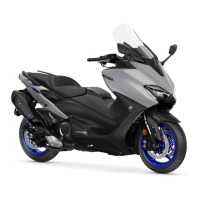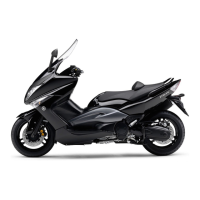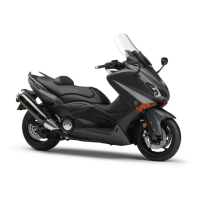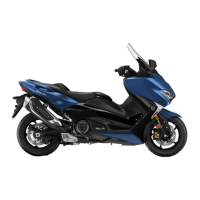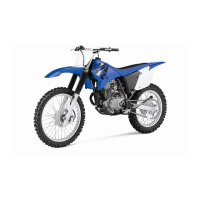8-105
ELECTRICAL COMPONENTS
EAS30562
CHECKING THE STARTER MOTOR
OPERATION
1. Check:
• Starter motor operation
Does not operate Perform the electric
starting system troubleshooting, starting with
step (4).
Refer to “TROUBLESHOOTING” on page 8-
13.
a. Connect the positive battery terminal “1”
and starter motor lead “2” with a jumper
lead “3”.
EWA13810
• A wire that is used as a jumper lead must
have at least the same capacity of the bat-
tery lead, otherwise the jumper lead may
burn.
• This check is likely to produce sparks,
therefore, make sure no flammable gas or
fluid is in the vicinity.
b. Check the starter motor operation.
EAS30566
CHECKING THE STATOR COIL
1. Disconnect:
• Stator coil coupler
(from the wire harness)
2. Check:
• Stator coil resistance
Out of specification Replace the stator coil.
a. Connect the digital circuit tester () to the
stator coil coupler as shown.
b. Measure the stator coil resistance.
EAS30680
CHECKING THE RECTIFIER/REGULATOR
1. Check:
• Battery charging voltage
Out of specification Check the stator coil
condition. If the stator coil does not have a
problem, replace the rectifier/regulator.
Refer to “CHECKING THE STATOR COIL”
on page 8-105.
a. Connect the digital circuit tester (AC V) to
the battery terminal as shown.
Stator coil resistance
0.224–0.336
Digital circuit tester (CD732)
90890-03243
Model 88 Multimeter with
tachometer
YU-A1927
• Positive tester probe
White “1”
• Negative tester probe
White “2”
• Positive tester probe
White “1”
• Negative tester probe
White “3”
• Positive tester probe
White “2”
• Negative tester probe
White “3”
Battery charging voltage
above 14 V at 5000 r/min
Digital circuit tester (CD732)
90890-03243
Model 88 Multimeter with
tachometer
YU-A1927
• Positive tester probe
Battery positive terminal
• Negative tester probe
Battery negative terminal

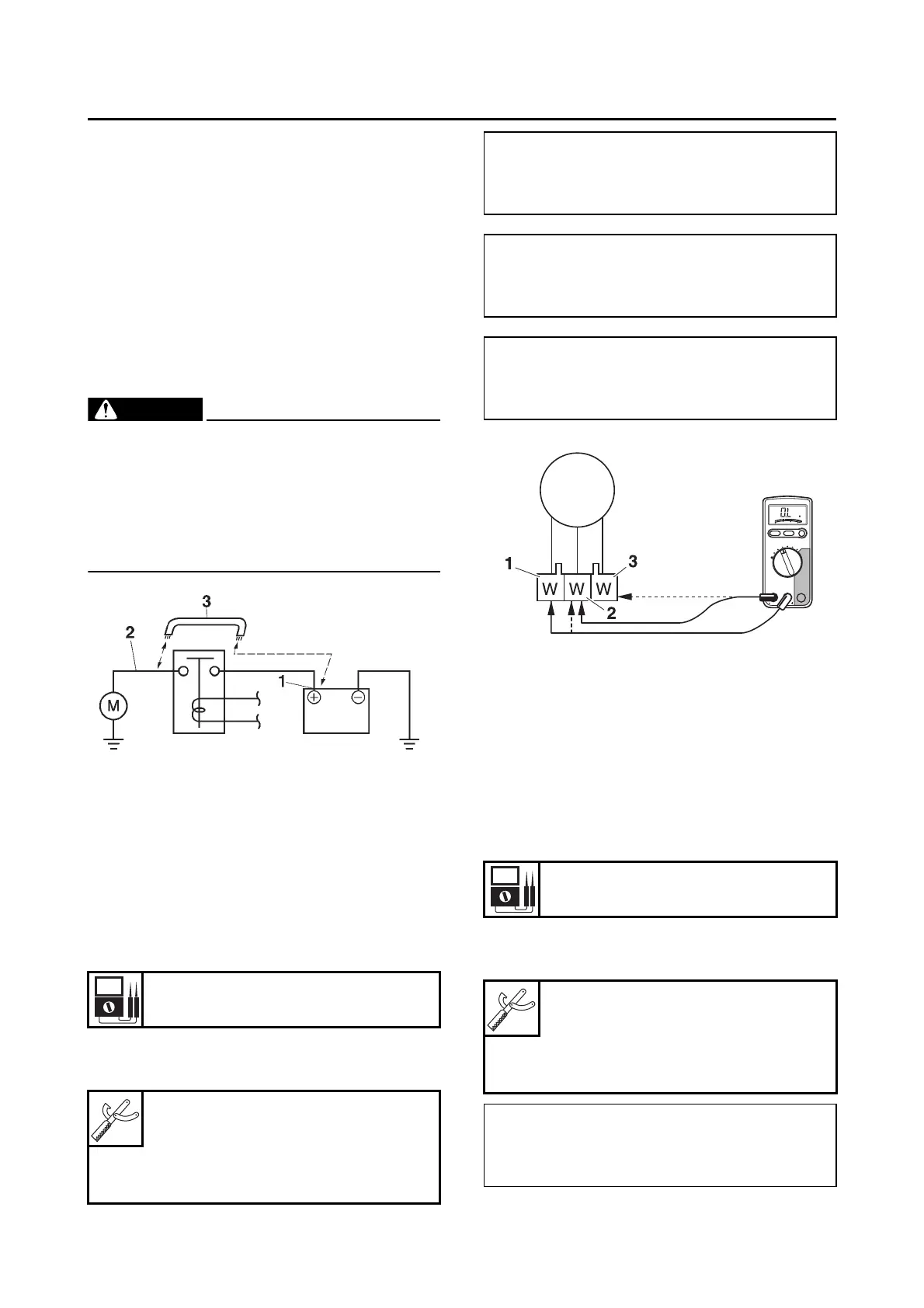